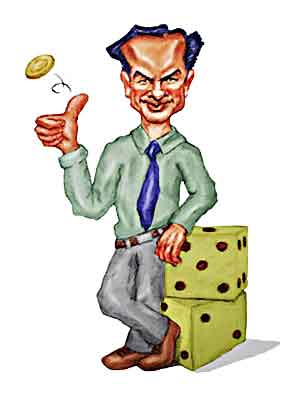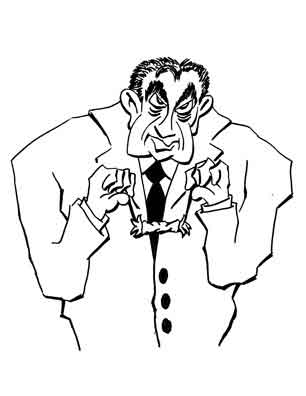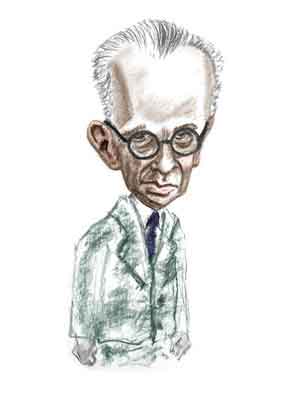Stanislaw Ulam

Stanislaw Ulam
Edward worked with him.
Stanislaw Ulam is best known for his collaboration - although that may not be the best word - with Edward Teller in designing a workable hydrogen bomb. Who worked with whom was debated then and now, but when asked Stan always said "Dr. Teller worked with me".
During the war (the big one), Stan (as he was called) worked in the theoretical division at Los Alamos. When the physicists began to lament that the math was too complicated to work out how much material you need and just how you could get an A-bomb to explode, Stan had a solution. Since radioactive decay, neutron capture, and such stuff are essentially random processes at the atomic level, you could take a table of random numbers and simulate the process on paper. By repeating the process enough times, you could use statistics to get the answer. Quickly dubbed the Monte Carlo method and developed further by Nicholas Metropolis, Stan's technique is now routinely used in everything from high energy physics to trying to figure how to beat a casino. It's been quite successful in the former endeavor, not as much as most people think for the latter. After all, if you visit a casino, look on what side of the table the money is.
However, we have to admit Monte Carlo calculations have been around for quite a while. The Italian physicist, Enrico Fermi (who also worked with Stan) used the method in the 1930's and never bothered publishing it. Before that the quality control officer (to use the modern term) of Guinness Brewery, William Gossett, used it to determine the distributions that govern behavior of small samples. William did publish his findings (but under the pseudonym "Student") in 1905.

Edward Teller
He worked with Stan.
Truth to tell, the Monte Carlo method, although not called by that name, goes back to at least to 1777. That was when the French mathematician George Leclerc, who was the Count of Buffon, calculated that if you dropped enough needles on a plank floor, you could calculate the value of π from the number of needles that fell across the cracks. It actually does work, but you need an awful lot of needles. It's easier to look up the digits to π on the internet.
Beyond his applied research, Stan loved working in pure mathematics and is often credited with what is called "Ulam's Conjecture". First you pick a number, any number. If it is even, divide it by 2. If it is odd, multiply it times 3 and add 1. Repeat the appropriate rule for each successive number based on whether it is odd or even. Then just keep going. What you will find is you end up with a sequence of numbers that ends in 4, 2, 1 and so keeps repeating 4, 2, 1 indefinitely.
The "conjecture" is that no matter what number you pick, you will always end up with repeating 4, 2, 1, 4, 2, 1, 4, 2, 1, ... ad infinitum. Although no exceptions to Ulam's conjecture have been found, no one has been able to prove that it really, really works for any number. It remains one of the most famous unsolved problems of number theory.

Kurt Gödel
The Undecidable Man
However, one thing about Ulam's Conjecture that is not conjecture is that it really should be (and often is) called the Collatz Conjecture. It seems, after all, that it was first proposed by Stan's mathematical contemporary, Lothar Collatz, in 1937. Stan did come up with some of his own interesting problems of pure mathematics, but evidently not this one.
There is a strong possibility that the Collatz (or Stan's) Conjecture is undecidable, that is, it cannot be proven within the rules of arithmetic, a conundrum similar to the theorem of Kurt Godel which asserted it's own unprovability.
But even though we might not be able to prove Stan's or Lothar's conjecture, if you have Excel on your computer (and a version that works with Visual Basic macros), you can check out some of the "stopping times" - that is the length of the sequence until it reaches the number 1 - for some integers if you click here. You can fiddle around with the spread sheet to see if you can come up with some interesting patterns and conjectures of your own.
Of course, this link is provided "as is" with no warranty, expressed or implied, that it will function on your computer. I don't even think Stan himself would conjecture on anything as iffy as a workable link.
References
Adventures of a Mathematician, Stanislaw Ulam, Charles Schriner's Sons (1976). A nice readable biography about Stan, by himself.